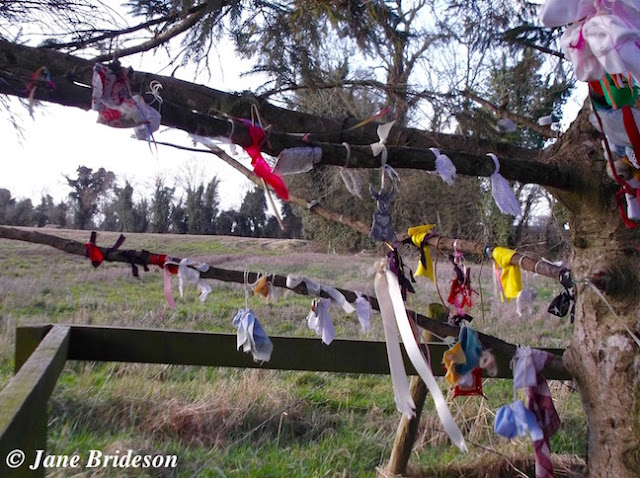The sun is warm, the Lough Field hares have a new leveret and Brigid’s promise of Spring has unfolded.
Earlier this week I made my way to Kildare.
Town square with the Tourist Information Centre, perpetual flame & statue of the saint.
Kildare takes it’s name from Cill Dara, the cell or church of the oak claimed to have been founded in 480 CE by the saint and her followers.
Pic © civic heraldry.com
The town’s modern coat of arms features a Brigid’s cross and oak branch with the motto ‘Spirit and Courage’.
In the square stands a statue of the saint, a memorial to the 350 men who were killed by British forces during the Irish Rebellion of 1798 on the Curragh of Kildare.
Nearby her perpetual flame rises as a symbol for hope, justice and peace.
As I explored the town I glimpsed Brigid’s sun wheels rendered in reeds, stone and metal.
The exhibit of various designs, made afresh annually by a local man, was displayed in a grocery shop window.
Visiting the ancient site of St Brigid’s Fire Temple revealed signs of the ritual which took place on 1st February this year, when her fire was kindled again.
Offerings of hyacinths & white quartz stones in the fire pit.
The town was bustling in the spring sunshine but the tranquility of the Well was calling me.
The Well gardens near the site of the millrace which was said to have been used by the saint.
Sunlight at the entrance where candles burn to Brigid.
The statue of the saint stands on a tiny island around which water flows.
Home made crosses and flowers left at Brigid’s feet.
The well itself was unadorned and the water clear.
Beyond it stood a RAG TREE festooned with offerings and healing requests.
As I stood savouring the sound of birdsong and flowing water I considered the importance of Kildare to the followers of Brigid, goddess and saint.
My mind then wandered to my own ancestors and family name, originally Mac Giolla Bhrighde, 'son of the servant of Bridget'.
Perhaps centuries ago, inspired by her flame, they had also known this place as pilgrims and I had walked in their footsteps.
A short visit to the Rag Tree and Brigid's Well narrated by the late Daithi O hÓgáin.




























